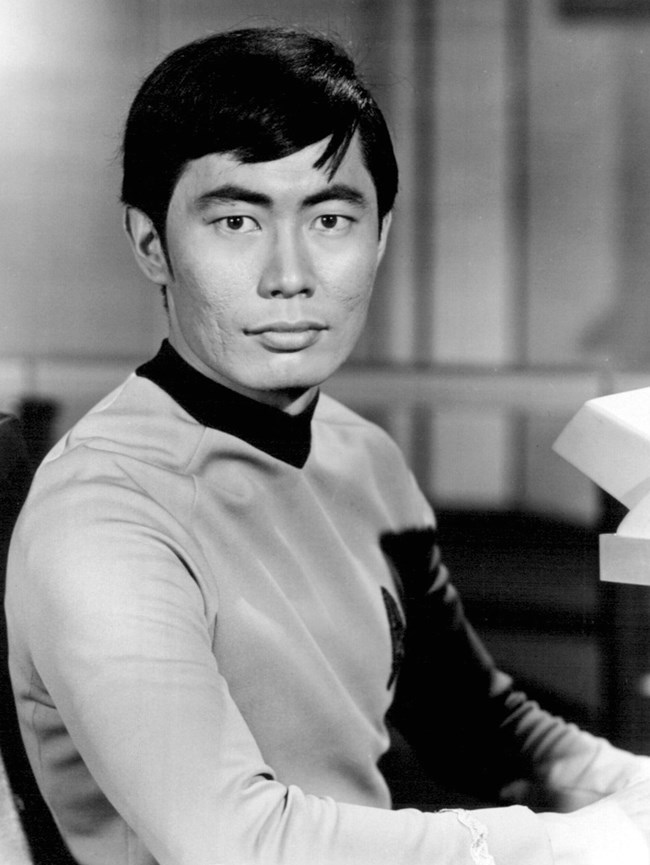Part of a series of articles titled Finding a Path Forward: Asian American Pacific Islander National Historic Landmarks Theme Study.
Article
Essay 13: Asian Americans and Cultural Retention/Assimilation

Publicity photo by NBC Studios (Public domain; https://commons.wikimedia.org/wiki/File:George_Takei_Sulu_Star_Trek.JPG)
In her groundbreaking documentary My America or Honk if You Love Buddha (1997), Renee Tajima-Pena highlights the nuanced diversity of Asian Americans in the US with humor, candor, and political insight. As Tajima-Pena travels across the US, we visualize Asian Americans' roles in the socio-cultural impact on space and place. The documentary frames the reality of Asian American communities having to battle to retain their culture while at the same time trying to assimilate in a country that does not accept or embrace them as Americans. This documentary spans the continent in search of "My America" and captures the nuanced experiences of Asian Americans, from New York to the internment camps of Manzanar. The dance of assimilation and cultural retention has spanned over two centuries. In many ways the socio-political-economic landscape has shaped the way in which Asian Americans have been introduced to America and also has played a critical role in the way Asian Americans and Pacific Islanders (AAPI) have responded to the demands to conform. The first Asians to set foot on US soil came to visit and learn from the US educational system, yet the pioneers were sojourning laborers whose presence grew as the economic need for their labor increased. Economic necessity pulled the migrant workers, but their existence in everyday life threatened the European migrants' claim to land and power. There are key social-political factors that impacted cultural spaces for AAPIs. This essay contextualizes assimilation and resistance through a historical-social lens. Read more >> (.pdf 3.0MB)
The views and conclusions contained in the essays are those of the authors and should not be interpreted as representing the opinions or policies of the U.S. Government. Mention of trade names or commercial products does not constitute their endorsement by the U.S. Government.
Last updated: July 23, 2024
